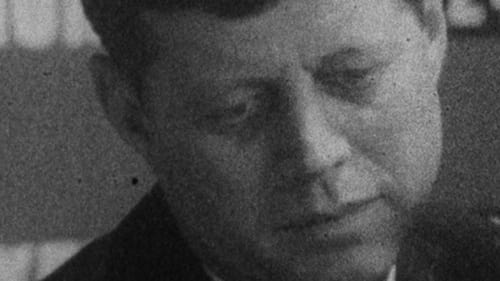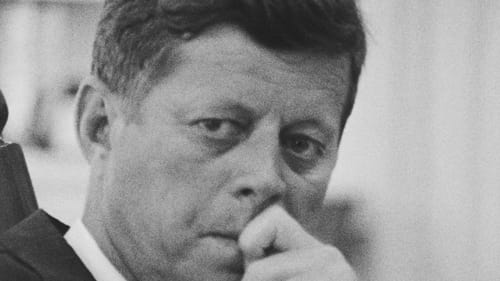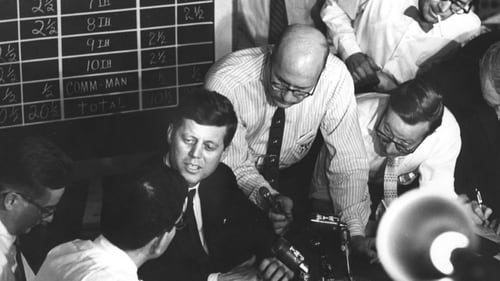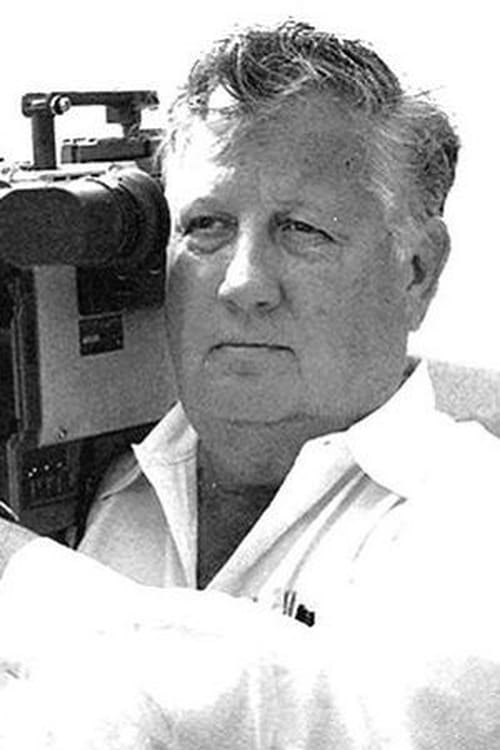Robert Drew
Birth : 1924-02-15, Toledo, Ohio, USA
Death : 2014-07-30
History
Robert Lincoln Drew was an American documentary filmmaker known as one of the pioneers—and sometimes called father—of cinéma vérité, or direct cinema, in the United States. Two of his films are archived in the National Film Registry of the Library of Congress. The moving image collection of Robert Drew is housed at the Academy Film Archive. The Academy Film Archive has preserved a number of his films, including "Faces of November," "Herself: Indira Gandhi," and "Bravo!/Kathy's Dance". His many awards include an International Documentary Association Career Achievement Award.
Wikipedia · Text under CC-BY-SA license

Self
In 1998, documentary filmmaker Robert Drew and his associates attend the Museum of Tolerance.

Self
An overview of the life and career of documentary filmmaker Robert Drew, in his own words.

Self
A 38-year journey that the director began in 1972 as a young filmmaker and, shooting off and throughout many years, the director filmed many and various encounters between Ricky, his friends and contemporaries including Henri Langlois, Jean Rouch, Jean-Luc Godard, DA Pennebaker, Robert Drew, and others. Mixing her own footage with film clips and rare images from Leacock's personal film archives, this film pays homage to the director's mentor and, most importantly, allows him to tell us the story of his long film making career in his own words.

Director
Bringing to life an American President who was widely respected by his countrymen and celebrated around the world. Composed from four break through films by Robert Drew, each an unprecedented record in candid photography of a phase of John F. Kennedy’s political life. Kennedy is seen in close up from young Senator campaigning for the Presidency, to an ebullient new President moving into the White House, to a burdened President trying to solve grave problems in the Oval Office. The shock of his death is seen through the faces of his compatriots. Now these four films are edited together with other footage of the time. This film is an intimate history of how one American President struggled to bring wisdom and honor to the office of the Presidency.

Director
Directed by Robert Drew.

Producer
Orson Welles — with contributions from scientists George Wald, Carl Sagan, and others — examines the possibility and implications of extraterrestrial life. In examining our perceptions of alien 'martians' from his "War of the Worlds" broadcast, to then-modern explorations of Mars, this film from NASA provides a unique glimpse at life on earth, and elsewhere in the universe.

Executive Producer
Documentary portrait of the legendary jazz bandleader.

Director
Documentary portrait of the legendary jazz bandleader.

Producer
Flying hundreds of miles a day through wild weather with no engine requires feats of airmanship unprecedented in human history and known before only to the birds. George Moffat and Gleb Derujinsky are great pilots and good friends who compete in the sport of Soaring for speed and distance in aircraft without engines - sleek competition gliders. Both would like to win the U.S. Soaring Championship. Derujinsky relies most on feel and creative impulse to sense his way through invisible air currents. Moffat does the same but relies more on a hand calculator he constantly works in his cockpit. This film 'The Sun Ship Game', voyages with both pilots into the sky at a regional contest in Vermont and into wild weather with eighty three other competitors in Marfa, Texas. Through eight days of hard flying in skies alternately filled with brilliant beauty and black violence, their two approaches arrive at a dramatic conclusion and one of them is named the U.S. Champion.

Director
Flying hundreds of miles a day through wild weather with no engine requires feats of airmanship unprecedented in human history and known before only to the birds. George Moffat and Gleb Derujinsky are great pilots and good friends who compete in the sport of Soaring for speed and distance in aircraft without engines - sleek competition gliders. Both would like to win the U.S. Soaring Championship. Derujinsky relies most on feel and creative impulse to sense his way through invisible air currents. Moffat does the same but relies more on a hand calculator he constantly works in his cockpit. This film 'The Sun Ship Game', voyages with both pilots into the sky at a regional contest in Vermont and into wild weather with eighty three other competitors in Marfa, Texas. Through eight days of hard flying in skies alternately filled with brilliant beauty and black violence, their two approaches arrive at a dramatic conclusion and one of them is named the U.S. Champion.

Executive Producer
“Songs of America” shows the two on stage, in the studio and on a concert tour across a turbulent country. Their ambitious Bridge Over Troubled Water album had yet to be released and the glorious title song was heard here by the general public for the very first time. The program showed news clips of labor leader/activist Cesar Chavez and the United Farm Workers, the Poor People’s Campaign’s march on Washington, the assassinations of Martin Luther King, JFK and Robert Kennedy and other events that were emblematic of the era. “Songs of America” was originally sponsored by the Bell Telephone Company, but the execs there got cold feet when they saw what they’d paid for—legend has it that they looked at the footage of JFK, RFK and MLK during the (powerful!) “Bridge Over Troubled Water” segment (approx 12 minutes in) and asked for more Republicans! (Not assassinated Republicans, just more Republicans...you know, for balance!) The special was eventually picked up by CBS.

Director
A documentary record of the day-to-day existence of a pair of young married heroin addicts.

Executive Producer
Robert Drew shows the sights and sounds from the funeral of President John F. Kennedy in November, 1963.

Director
Robert Drew shows the sights and sounds from the funeral of President John F. Kennedy in November, 1963.

Executive Producer
During a two-day period before and after the University of Alabama integration crisis, the film uses five camera crews to follow President John F. Kennedy, attorney general Robert F. Kennedy, Alabama governor George Wallace, deputy attorney general Nicholas Katzenbach and the students Vivian Malone and James Hood. As Wallace has promised to personally block the two black students from enrolling in the university, the JFK administration discusses the best way to react to it, without rousing the crowd or making Wallace a martyr for the segregationist cause.

Director
During a two-day period before and after the University of Alabama integration crisis, the film uses five camera crews to follow President John F. Kennedy, attorney general Robert F. Kennedy, Alabama governor George Wallace, deputy attorney general Nicholas Katzenbach and the students Vivian Malone and James Hood. As Wallace has promised to personally block the two black students from enrolling in the university, the JFK administration discusses the best way to react to it, without rousing the crowd or making Wallace a martyr for the segregationist cause.

Director
Follows a crusading lawyer as he embarks on a campaign to save an African-American man, Paul Crump, from the electric chair.

Producer
Documentary focusing on 25 year-old actress Jane Fonda as she and her director Andreas Voutsinas prepare a stage play called The Fun Couple for Broadway.

Producer
The first candid film made on a foreign chief of state, three weeks in the life of Jawaharlal Nehru.

Executive Producer
Susan Starr is a talented young concert pianist preparing for the biggest competition of her life. She also happens to have a terrible cold that keeps her in bed and an omnipresent mother. Battling against 34 of the most talented pianists in the world at the Metropolitan Opera House in New York, Susan hopes to win not only prize money in the Dimitri Mitropoulos International Piano Competition, but also the recognition that could launch the musical career for which she has been working since she was three years old. Following Susan through the hectic days leading up to the event and through the competition itself, the film captures the intense reality of an aspiring young artist facing the challenge of her life.

Producer
The documentary traces Eddie Sachs (one of the most popular drivers in the history of the Indianapolis 500) in a behind-the-scenes look at the race from his perspective, starting from a week before the race through the day after the big event. You can feel the fervor and anticipation build (*pay close attention to the scaffolding that collapses with too many people on it during the race) as Eddie prepares to keep his place, "on the pole."

Executive Producer
A look at the daily business of U.S. President John F. Kennedy, with a focus on some of the political issues he faces six weeks into his term.

Director
After the US forces Cuba out of the OAS, demonstrations erupt in Venezuela. In Cuba Castro addresses a rally of one million people.

Producer
After the US forces Cuba out of the OAS, demonstrations erupt in Venezuela. In Cuba Castro addresses a rally of one million people.

Editorial Manager
Primary is a documentary film about the primary elections between John F. Kennedy and Hubert Humphrey in 1960. Primary is the first documentary to use light equipment in order to follow their subjects in a more intimate filmmaking style. This unconventional way of filming created a new look for documentary films where the camera’s lens was right in the middle of what ever drama was occuring.

Sound Recordist
Primary is a documentary film about the primary elections between John F. Kennedy and Hubert Humphrey in 1960. Primary is the first documentary to use light equipment in order to follow their subjects in a more intimate filmmaking style. This unconventional way of filming created a new look for documentary films where the camera’s lens was right in the middle of what ever drama was occuring.

Self
Primary is a documentary film about the primary elections between John F. Kennedy and Hubert Humphrey in 1960. Primary is the first documentary to use light equipment in order to follow their subjects in a more intimate filmmaking style. This unconventional way of filming created a new look for documentary films where the camera’s lens was right in the middle of what ever drama was occuring.

Producer
Primary is a documentary film about the primary elections between John F. Kennedy and Hubert Humphrey in 1960. Primary is the first documentary to use light equipment in order to follow their subjects in a more intimate filmmaking style. This unconventional way of filming created a new look for documentary films where the camera’s lens was right in the middle of what ever drama was occuring.

Writer
Primary is a documentary film about the primary elections between John F. Kennedy and Hubert Humphrey in 1960. Primary is the first documentary to use light equipment in order to follow their subjects in a more intimate filmmaking style. This unconventional way of filming created a new look for documentary films where the camera’s lens was right in the middle of what ever drama was occuring.

Director
Primary is a documentary film about the primary elections between John F. Kennedy and Hubert Humphrey in 1960. Primary is the first documentary to use light equipment in order to follow their subjects in a more intimate filmmaking style. This unconventional way of filming created a new look for documentary films where the camera’s lens was right in the middle of what ever drama was occuring.

Director
A coach’s whole career depends upon winning this football game, the U.S. Air Force Academy against the University of Colorado. The film was an early experiment by Drew and his Associates to capture real life happening in front of the cameras. They had not yet developed the new equipment that would allow portable sync-sound filming, so they improvised. Drew, who was still a correspondent for LIFE Magazine at the time, was trying to make films that would promote LIFE stories on television. This idea was how Drew had convinced Time-Life to bankroll his fledgling film unit. Although the football story never became a LIFE magazine cover story, it served as a kind of dry-run for a film about another football game covered by Drew and his Associates four years later. That film, “Mooney vs. Fowle,” led by filmmaker James Lipscomb, became an award-winning, groundbreaking documentary.

Producer
A coach’s whole career depends upon winning this football game, the U.S. Air Force Academy against the University of Colorado. The film was an early experiment by Drew and his Associates to capture real life happening in front of the cameras. They had not yet developed the new equipment that would allow portable sync-sound filming, so they improvised. Drew, who was still a correspondent for LIFE Magazine at the time, was trying to make films that would promote LIFE stories on television. This idea was how Drew had convinced Time-Life to bankroll his fledgling film unit. Although the football story never became a LIFE magazine cover story, it served as a kind of dry-run for a film about another football game covered by Drew and his Associates four years later. That film, “Mooney vs. Fowle,” led by filmmaker James Lipscomb, became an award-winning, groundbreaking documentary.





